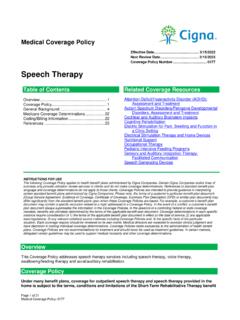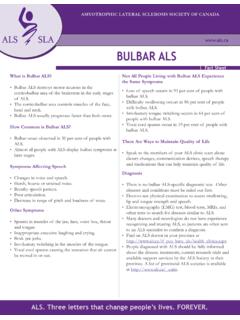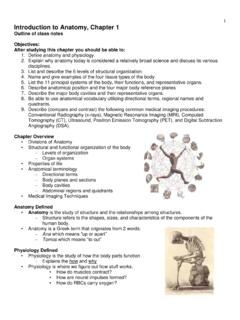Transcription of Exercises for Vocal Cord Dysfunction
1 Calgary COPD & Asthma Program Exercises for Vocal cord Dysfunction Diaphragmatic Breathing Many people who experience difficulty breathing will benefit from lower, relaxed breathing that fills the part of the lungs below the shoulders, armpits, and upper chest not just the upper lung area near the shoulders. Many people tighten the neck and shoulder muscles in response to air hunger, there by increasing the experience of throat tightness. The goal of this exercise is to become comfortable with low, deep diaphragmatic breathing. How: 1. Sit or lie quietly with one hand on your chest and one hand on your belly, below your ribcage. 2. Without changing anything, notice the movement when you inhale and exhale. 3. Try to make your belly rise or expand outward when you inhale deeply.
2 When you exhale, let your belly deflate or move in as the air leaves your body. 4. Do this deep breathing without moving your shoulders. 5. Deep, relaxed breathing is rhythmic, with equal intervals of inhalation and exhalation. Sniff-Breath Technique This is the actual breathing manoeuvre that will be used when the first trigger of a VCD episode is identified. Being able to breathe through the nose is important for this step. Blow your nose if necessary before beginning. How: 1. Practice sniffing deeply through your nose. 2. Practice sniffing in deeply and quickly. 3 quick sniffs that rapidly follow one another allows air into your lungs by forcing your Vocal folds open. 3. After you take 3 quick, deep sniffs into your body, exhale through pursed lips or while making any of the following sounds for a count of 8-10: s, sh, f.
3 - This step is important to keep your throat open when you exhale. - You must exhale as completely as possible to avoid hyperventilation 4. Do 5 consecutive sniff-breath Exercises at five times throughout the day. It helps to pair the exercise with a routine activity such as mealtime, tooth brushing, and bedtime. Do the exercise before starting the activities that tend to trigger the Vocal cord Dysfunction episode, and at the first sign of onset of a VCD episode. The Goal is to ward off the episodes, recover breathing more quickly and easily, reduce the frequency of episodes, and eventually, keep them from happening at all. This material is designed for information purposes only. It should not be used in place of medical advice, instruction and/or treatment. If you have specific questions, please consult your doctor or appropriate healthcare professional.
4 References National Jewish Medical and Research Center (1995). Retrieved February 8, 2006 from Sandage,M. & Zelazny,S (2004) . Paradoxical Vocal Fold Motion in Children and Adults. Language, speech, and hearing services, in schools. 35(4), 353-362








